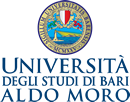Translanguaging: a “Practical Theory of Languages” to Support Minority Language Education
DOI:
https://doi.org/10.15162/1970-1861/1326Parole chiave:
Translanguaging, Bilingualism, Heritage Languages, Minority Languages, Multilingual EducationAbstract
To address the communicative and educational needs of multilingual and complex social realities, the present work suggests adopting a translanguaging approach as a “practical theory of languages”. First, from a socio-linguistic point of view, a theory of languages characterised by soft boundaries enables us to portray the way real individuals convey meanings in their everyday life, interacting with each other, exploiting all the linguistic and semiotic resources available. Translanguaging goes beyond the concept of countability of languages focusing on the multilingual and multimodal repertoire of multiple language speakers. Secondly, from an educational perspective, by questioning the traditional assumption of languages as separate entities, the theory rejects the native/non-native label, typical of monolingual education systems, mainly concerned with the linguistic achievement purely conceived in terms of proficiency levels. Most importantly, a translanguaging approach in language education requires a critical gesture that aims to develop a high degree of cultural and linguistic awareness. It transforms the whole educational system creating a more inclusive space where, through interaction, students can act critically and creatively to break the traditional dichotomies between majority and minority languages.
Riferimenti bibliografici
Berthele R., 2020, “The extraordinary ordinary: Re-engineering multilingualism as a natural category. OASIS Summary of Berthele”, in Language Learning. https://oasis-database.org.
Bialystok E., Barac R., 2012, “Emerging Bilingualism: Dissociating Advantages for Metalinguistic Awareness and Executive Control”, in Cognition 122(1): 67-73.
Blommaert J., 2016, “From mobility to complexity in sociolinguistic theory and method”, in: N. Coupland (Ed.), Sociolinguistics: Theoretical debates, Cambridge, UK: Cambridge University Press, pp. 242- 260. https://doi.org/10.1017/CBO9781107449787.012.
Canagarajah S., 2004, “Multilingual writers and the struggle for voice in academic discourse”, in A. Pavlenko & A. Blackledge (Eds.), Negotiation of identities in multilingual contexts, Clevedon, UK: Multilingual Matters, pp. 266-289. 10.1057/9781137032829_3.
Canagarajah S., 2013, Translingual Practice: Global Englishes and Cosmopolitan Relations, London/New York, Routledge. http://dx.doi.org/10.1111/josl.12095.
Carbonara V., Scibetta A., 2020a, Imparare attraverso le lingue: il Translanguaging come pratica didattica, Roma, Carocci.
Carbonara V., Scibetta A., 2020b, “Integrating Translanguaging Pedagogy into Italian Primary Schools: Implications for Language Practices and Children’s Empowerment”, in International Journal of Bilingual Education and Bilingualism, 1-21.
Cenoz J., 2013, “The influence of bilingualism on third language acquisition: Focus on multilingualism”, in Language Teaching, 46(1): 71-86.
Cenoz J., Gorter D., 2011, “A holistic approach to multilingual education: introduction”, in The Modern Language Journal, 95(3): 339–343. https://doi.org/10.1111/j.1540-4781.2011.01204.x.
Cenoz J., Gorter D., 2017, “Minority languages and sustainable translanguaging: threat or opportunity?”, in Journal of Multilingual and Multicultural Development, 38: 901-912. https://doi.org/10.1080/01434632.2017.1284855.
Cenoz, J., Gorter, D., 2019, "Minority Languages, National State Languages, and English in Europe: Multilingual Education in the Basque Country and Friesland", in Journal of Multilingual Education Research: Vol. 9, Article 9. https://research.library.fordham.edu/jmer/vol9/iss1/9
Council of Europe, 2001, Common European Framework of Reference for Languages (CEFR). Online document: http://www.coe.int/t/dg4/linguistic/Source/Framework_EN.pdf
Creese A., Blackledge A., 2015, “Translanguaging and identity in educational settings”, in Annual Review of Applied Linguistic, 35: 20-35. https://doi.org/10.1017/S0267190514000233.
Cummins J., 2021, Rethinking the Education of Multilingual Learners, Bristol, Multilingual Matters.
Douglas Fir Group, 2016, “A transdisciplinary framework for SLA in a multilingual world”, in Modern Language Journal, 95: 339-343. https://www.jstor.org/stable/44134994.
Duff P.A., Li P.A., 2009, “Indigenous, Minority, and Heritage Language Education in Canada: Policies, Contexts, and Issues”, in The Canadian Modern Language Review / La revue canadienne des langues vivantes, 66: 1-8. http://dx.doi.org/10.1353/cml.0.0100.
Eckert P., McConnell-Ginet S., 1995, “Constructing Meaning, Constructing Selves: Snapshots of Language, Gender and Class from Belten High”, in P. Eckert, & J. Rickford (Eds.), Style and Sociolinguistic Variation, Cambridge: Cambridge University Press, pp. 119-126.
Fishman J., 1966, “The implication of Bilingualism for Language Teaching and Language Learning”, in A. Valdman (Ed.), Trends in Language Teaching, New York, McGraw-Hill, pp. 146-58.
García O., 2009, Bilingual Education in the 21st Century: a Global Perspective. Malden, Wiley/Blackwell.
García O., Li W., 2015, “Translanguaging, bilingualism and bilingual education”, in W. Wright, S. Boun, & O. García (Eds.), Handbook of Bilingual Education, Malden, MA: John Wiley, pp. 223-240.
García O., 2005, “Positioning Heritage Languages in the United States”, in Modern Language Journal, 89 (4): 601-605. https://www.jstor.org/stable/3588631.
Grosjean F., 1985, “The bilingual as a competent but specific speaker-hearer”, in Journal of Multilingual Multicultural Development, 6, pp. 467-477.
Grosjean F., 2006, “Studying Bilinguals: Methodological and Conceptual Issues” in A. de Groot, J.F. Kroll (Eds.), Tutorial in Bilingualism: Psycholinguistics Perspectives. Mahway, NJ, Erlbaum, pp. 225-254.
Hall J.K., 2019, “The contributions of conversation analysis and interactional linguistics to a usage-based understanding of language: Expanding the transdisciplinary framework”, in The Modern Language Journal, 103, (supplement), 80-94. https://doi.org/10.1111/modl.12535.
He A., 2006, “Toward an identity theory of the development of Chinese as a heritage language”, in Heritage Language Journal, 4(1).
Herdina P., Jessner U., 2002, “A Dynamic Model of Multilingualism. Perspectives of Change in Psycholinguistics”, in Zeitschrift Für Interkulturellen Fremdsprachenunterricht, 7(2).
Hornberger N.H., Wang, S.C., 2008, “Who Are Our Heritage Language Learners?”, in D. Brinton, O. Kagan, & S. Bauckus (Eds.), Heritage language education: a new field emerging, New York, NY, Routledge, pp. 3–35.
Jaensch C., 2009, “L3 enhanced feature sensitivity as a result of higher proficiency in the L2”, in Y-KI Leung (Ed.) Third language acquisition and Universal Grammar (pp. 15-43), Clevedon, Multilingual Matters.
Kanno Y., Norton B., 2003, “Imagined communities and educational possibilities: Introduction”, in Journal of Language, Identity, and Education, 2(4): 241-249. http://dx.doi.org/10.1207/S15327701JLIE0204_1.
Leeman J., 2014, “Critical approaches to the teaching of Spanish as a local-foreign language”, in Lacorte, M. (ed.), The handbook of Hispanic applied linguistics, New York, NY, Routledge, pp. 275–292. https://doi.org/10.1017/S0267190514000245.
Li W., 2018, “Translanguaging as a practical theory of language”, in Applied Linguistics, 39: 9-30. http://dx.doi.org/10.1093/applin/amx044.
Little D., 2005, “The Common European Framework and the European Language Portfolio: involving learners and their judgements in the assessment process”, in Language Testing, 22(3): 321–336. https://doi.org/10.1191/0265532205lt311oa
Modan G., 2001, “White, whole wheat, rye: Jews and ethnic categorization” in Washington, DC, Journal of Linguistic Anthropology, 11(1), pp. 116–130.
Norton B., 2000, Identity and language learning: Gender, ethnicity and educational change, Harlow, Pearson Education/Longman.
Norton B., 2005, “Towards a model of critical language teacher education”, in Language Issues, 17(1): 12-17. https://faculty.educ.ubc.ca/norton/Language%20Issues%20(2005)%20-%20Towards%20a%20model%20of%20critical%20langauge%20teacher%20education.pdf.
Ortega L., 2019, “SLA and the study of equitable multilingualism”, in Modern Language Journal, 103, (Supplement 2019), 23-38. https://doi.org/10.1111/modl.12525.
Otheguy R., Garcìa O., Reid W., 2015, “Clarifying translanguaging and deconstructing named languages: A perspective from linguistics” in Applied Linguistics Review, 6(3): 281–307. DOI 10.1515/applirev-2015-0014.
Otheguy R., García O., Reid, W., 2019, “A translanguaging view of the linguistic system of bilinguals”, in Applied Linguistics Review, 10(4), pp. 625-651.
Pennycook A., 2010, Language as a Local Practice, London, Routledge.
Sayer P., 2013, “Translanguaging, TexMex, and Bilingual Pedagogy: Emergent Bilinguals Learning Through the Vernacular”, in Tesol Quarterly, 47(1): 63-88. https://doi.org/10.1002/tesq.53.
Valdés G., 2001, “Heritage languages students: Profiles and possibilities”, in J. K. Peyton, D. A. Ranard, & S. McGinnis (Eds.), Heritage languages in America: Preserving a national resource, Washington, DC: Center for Applied Linguistics/Delta Systems, pp. 37–77.
Valdés G., 2005, “Bilingualism, Heritage Language Learners, and SLA Research: Opportunities Lost or Seized?”, in The Modern Language Journal, 89(3), pp. 410-426. https://doi.org/10.1111/j.1540-4781.2005.00314.x.
Valdés G., Figueroa, R.A., 1994, Bilingualism and testing: A special case of bias. Ablex Publishing.
Williams C. 1994, Arfarniad o Ddulliau Dysgu ac Addysgu yng Nghyd-destun Addysg Uwchradd Ddwyieithog, [An evaluation of teaching and learning methods in the context of bilingual secondary education]. Unpublished Doctoral Thesis (University of Wales, Bangor).
Williams C., 2000, “Welsh-medium and bilingual teaching in the further education sector”, in International Journal of Bilingual Education and Bilingualism, 3(2), pp. 129-148.





